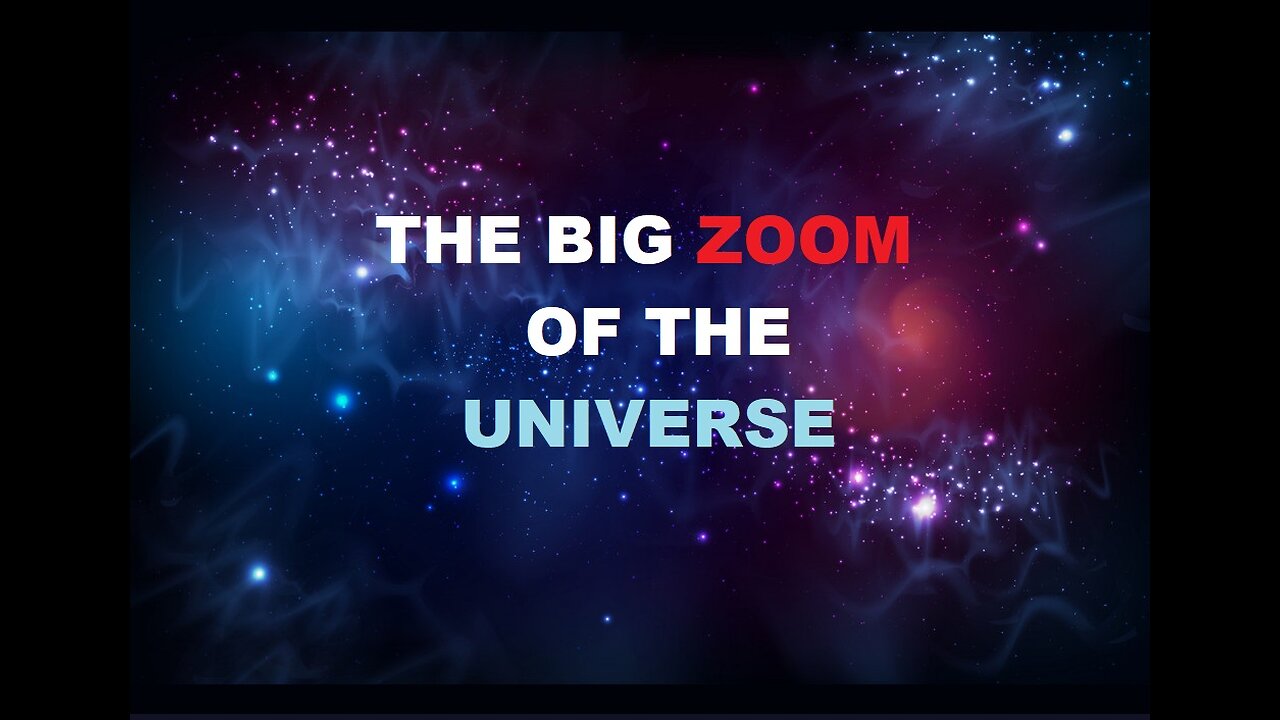Premium Only Content

The big zoom of the Universe
The Universe is a vast and complex system that contains everything we know to exist, including galaxies, stars, planets, and all forms of matter and energy. The observable Universe is estimated to be around 93 billion light-years in diameter and is thought to have originated from a single point of infinite density and temperature, known as the Big Bang.
At its largest scale, the Universe is composed of countless galaxies, each containing billions of stars and other celestial bodies. These galaxies are organized into clusters and superclusters, which are distributed throughout the Universe.
The structure of the Universe is shaped by the forces of gravity, which cause matter to clump together and form structures like galaxies and galaxy clusters. Dark matter, a mysterious substance that does not interact with light, also plays a crucial role in shaping the large-scale structure of the Universe.
As we zoom out further, the Universe appears to be homogeneous and isotropic, meaning that it looks the same in all directions and at all scales. This property is known as cosmological homogeneity and is a fundamental assumption of the Big Bang model.
However, recent observations suggest that the Universe may not be completely homogeneous and that there may be subtle variations in the distribution of matter and energy at the largest scales. These observations have led to the development of new theories and models of the Universe, such as cosmic inflation and dark energy, that attempt to explain these observations.
Overall, the Universe is an incredibly vast and complex system that continues to challenge our understanding and push the limits of human knowledge.
-
 1:38:15
1:38:15
Russell Brand
2 hours agoGlastonbury Goes RADICAL - Police Probe 'Death to the IDF' Chant - SF605
168K15 -
 1:32:42
1:32:42
Tucker Carlson
2 hours agoRFK Jr. Provides an Update on His Mission to End Skyrocketing Autism and Declassifying Kennedy Files
45.1K36 -
 DVR
DVR
Sean Unpaved
2 hours agoCode, Kill, Cash & Trades: Beasley Bets & NFL Trades
14K1 -
 LIVE
LIVE
RalliedLIVE
1 hour ago $1.21 earnedSHOTTY BOYS WARZONE CHALLENGES
293 watching -
 1:06:29
1:06:29
MTNTOUGH Podcast w/ Dustin Diefenderfer
4 hours agoJeremy Noble: What Army Rangers Do Every Day to Build Unbreakable Mental Toughness | MTNPOD #122
4.96K -
 LIVE
LIVE
SternAmerican
1 day agoElection Integrity Call – Monday, June 30 at 2 PM EST | Hosted by Steve Stern & Raj Doraisamy
158 watching -
 1:04:25
1:04:25
Timcast
3 hours agoDemocrat Zohran Mamdani Calls For TAXING WHITE PEOPLE, Media Says HES NOT Communist
207K71 -
 LIVE
LIVE
Viss
2 hours ago🔴LIVE - Dominating The Battleground with Tactics! - PUBG
86 watching -
 1:04:27
1:04:27
Rebel News
2 hours agoPoilievre byelection called, Carney folds to Trump, Dr. Tam wins Order of Canada | Rebel Roundup
17K20 -
 LIVE
LIVE
StoneMountain64
1 hour agoPUBG maximum LOGIC + STRATEGY for the WIN
57 watching